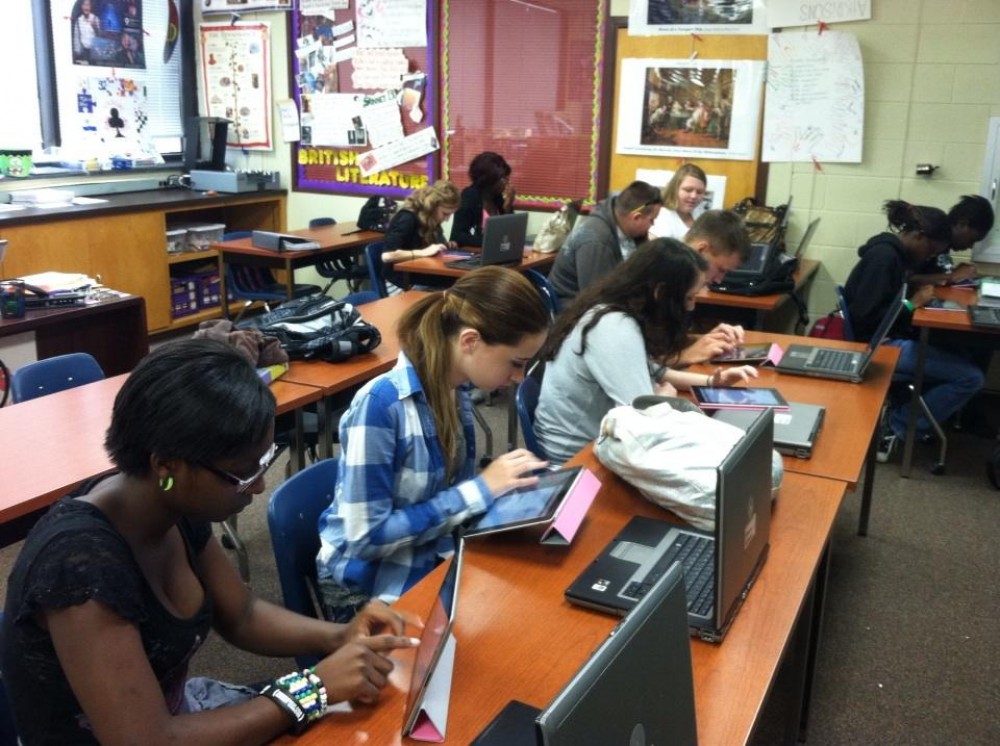Students Only Audience or an Audience of One?
When I became an English teacher, I had delusions of grandeur when I thought about the wonderful research papers my students would submit to me. If I have had a shortcoming as a teacher, my ability to successfully teach my students the research process would have to be the biggest. Every year, I have reinvented the wheel, but the proverbial tide began to turn last summer when I saw Michael Clay Thompson in Charleston at the Gifted and Talented conference. In his presentation, he discussed giving students multiple, short opportunities to practice the research process if we wanted them to be more successful. While I pondered, I considered how this statement alone went against most English teachers’ perceived notions the research paper. “Get rid of the Beast? The back-breaker of students (and teachers)? The make or break of the year?” Absolutely. Could it be that easy to throw in the towel? Yes. But how would you structure it? How would you make the process meaningful for students?
I left that conference and spent my summer pondering. I went to AVID. I pondered some more. Finally, after all my summer learning, pondering, and staff development, I decided that I would completely revamp the research process in my classroom. The process needed to connect with the real world and offer students choice in their learning. The kids should interact with the community and incorporate our school wide outcomes (personal responsibility, social responsibility, critical thinking, and communication). And so the English IV service learning project was born. Students would research and write a service learning proposal. They would participate in community service and gain experience with the issues/needs they saw in our area. They would interview an expert in their field of study and write a problem solution paper. Then, they would create an argument project to draw more attention to their issue and try to have it published. Finally, they would present the whole body of their work to the world in a blog as well as to an audience we bring together at school.
And since last fall, this has been our process, but each semester, I tweaked, trying to provide my students with the most authentic audience (yeah, I used that buzzword) I could provide for all their beautiful, passionate hard work and effort, and so far, I haven’t succeeded. A handful of students have had letters to the editor published in our local newspaper (which is nice), they love to share their public service announcements via YouTube, and their blogs are nice (they love to see where their viewers come from) but receive no feedback, so who are they really reaching?
George Couros, author of a piece titled “Authentic Audience,” believes teachers can help provide their students with this elusive audience by tweeting their work for the world. One of his students received feedback on her writing from the author her class had been studying. What a powerful motivation tool and how affirming that response must have been for this student! So this week, I tweeted links to a list of student blogs, but who am I really reaching when I only have 46 followers?
Andrea Hernandez addresses whether student blogs provide an authentic audience in a guest post on Langwitches Blog. She questions how the writing experience using blogs can be authentic if the writers have no audience and are receiving no feedback. When she addresses the need for quality work, she states, “There are only so many people ‘out there’ who want to read poorly written, lacking-in-passion posts with titles like ‘Journal #5.'” I agree. This is why my students conduct research, complete community service experiences, and write and revise before they blog. This is why I’m modeling the process for them. But for all their hard work and passion, they still have no audience. Then, she says teachers should get connected, so I am. I tweeted out my students’ blog urls earlier this week; then, I discovered #Comments4Kids yesterday and tweeted their blog urls out again. Then, she mentioned that there should be conversation, so I asked for her help, and she responded,
@ReneeAtk Great! Please join the discussion at http://is.gd/aq8UCo.
So I’ll continue to study… And I’ll continue to read…
Eight Ways To Build An Audience For Your Blog.
The Best Sources Of Advice For Teachers (And Others!) On How To Be Better Bloggers.
And I’ll join that conversation, Ms. Hernandez, because now it’s time to stop talking so I can listen and learn how to build the best audience for my students.
